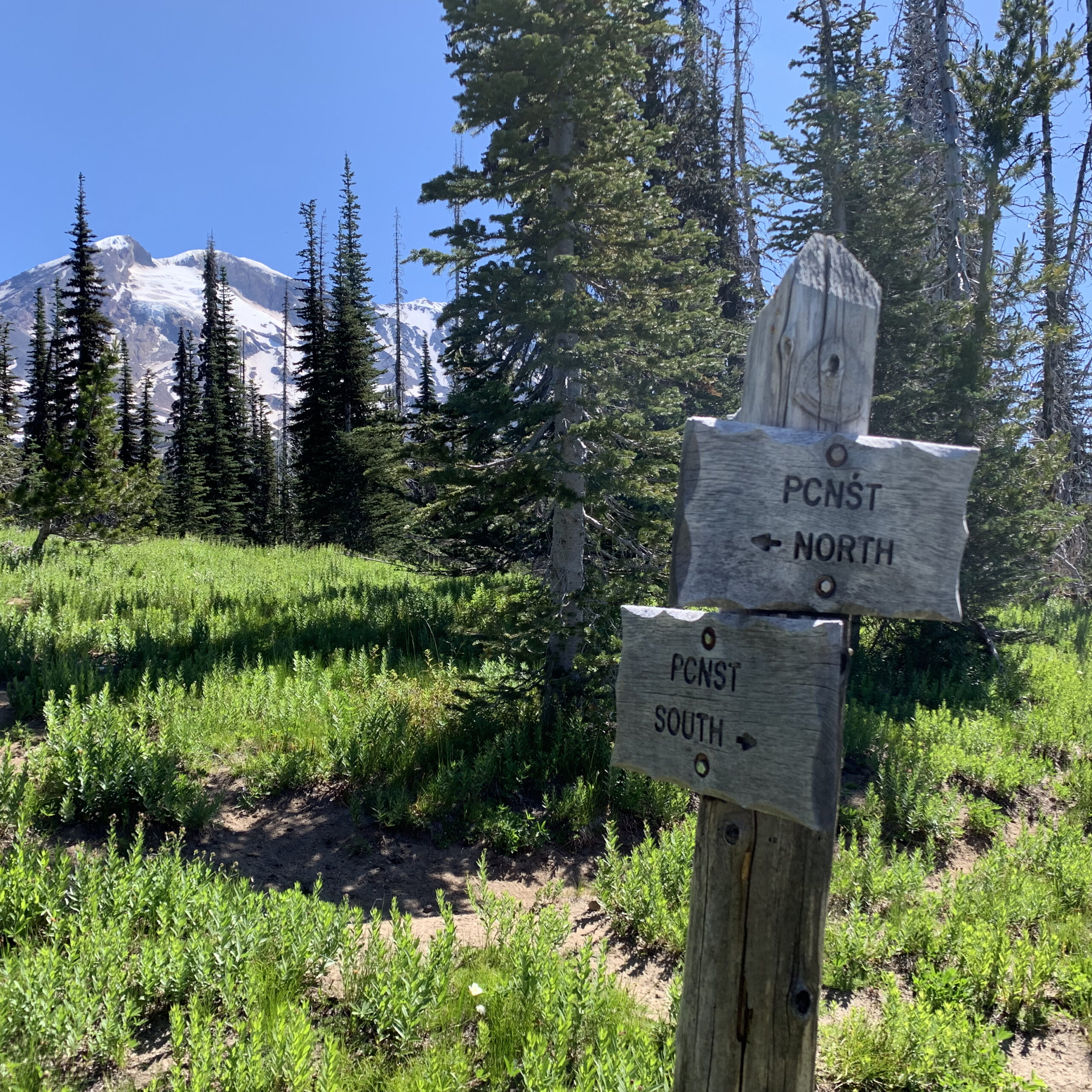
The air is crisp, but the sun warms my shoulders and my nose finds a hint of scent from wildflowers exploding in early spring.
I’m in Washington State, walking through Mount Adams Wilderness on the Pacific Crest Trail.
I move well, but I can’t keep my eyes on the trail as glimpses of this snow-covered lump of North Cascade disappears and reappears through a screen of spindly fir.
It’s somewhere along here, dazzled by the beauty of the day, that I make my first mistake.
The track is well-used but it’s taking me closer to Adams’ flanks, heading up when I really ought to be going down.
I push that thought aside and just keep moving forward, further and further away from where I know I am supposed to be.
Not until I reach a boulder-strewn stream do I stop. It’s not a particularly difficult stream to cross, but in choosing the best place to ford, my momentum is slowed, long enough to for my ego to be set aside and reason to return.
I pull out a map.
Oh no. I was meant to go down – two miles ago!
Escalation of Commitment
Why on earth did I keep moving forward even when I knew (maybe subconsciously) it was the wrong way?
There’s a particular bias we’re susceptible to around stopping ourselves even when things are clearly not going well. It’s called “Escalation of Commitment.”
The idea is that when we’re faced with increasingly negative outcomes, rather than quit or reassess, we tend to double down on reaching our goals.
Instead of changing direction, we change our attitude.
Of course, a good attitude is usually a good thing, but in this case it’s not based on reality. It’s based on hope. We hope that somehow if we keep moving, things will work out in the end.
And right there, on the bank of that little glacial-fed steam tumbling off lovely Mount Adams, I realized I was in the throes of this bias, making it nearly impossible to stop the inertia that was pulling me further and further away from where I needed to be.
S.T.O.P.
Luckily for me, there’s a fantastic remedy for this type of impulsive behavior. In the outdoor world, we use the acronym S.T.O.P.
It stands for:
- Sit down
- Think
- Observe
- Plan
Let’s break that down.
Sit Down
The first step when you’re on the wrong path is about controlling panic. We stop our racing minds by stopping the forward momentum and not making a potentially chaotic situation worse.
It’s kind of like when you’re untangling a necklace. You have to slow your movements way down to get that task finished!
In real life, we need to take those breathers, the pauses that stop us from moving forward towards what we think is achievement, but might very well be the wrong path entirely.
Think and Observe
The next steps first require an internal inventory. On trail that might mean trying to remember the last time you knew you were on the route, to recall familiar landmarks, to think of the steps you took that got you here.
After that, you begin to look around and observe. Can you get back to where you left off and if you can’t, can you stay here until help arrives? What is happening in the weather? Is there water to drink, is there a place to be safe?

Plan
And finally, after much thought, it’s time to plan. Based on all we came up with, what is the right next step? The key at this juncture is to not to take one more step until we have a reason to take a step.
Fortunately for me, I’d simply blown right past the sign at a trail junction that pointed me in the right direction.I zigged instead of zagged and that only required a few miles of back-tracking. Once I got oriented with a compass, I was certain I’d find my way.
And there was a happy ending in meeting a hiker I hadn’t seen in a few weeks who I laughed and sang with all the way down the mountain.
A Surprise Spur Trail
If you find yourself moving forward even when everything around you is saying, “This is the wrong way!” consider using that simple acronym to S.T.O.P. moving, reaching, achieving, acting, grasping.
Take a moment to break the bias of escalation of commitment and assess the path you’re on. Sometimes a spur trail you hadn’t noticed before, can suddenly appear.


6 Responses
Hi Alison,
In addition to liking your STOP advice, I liked the mountain photo and will attempt to paint it with water colors.
As always, I enjoy reading your trail posts, A few of my relatives read your well done Ted Talk while I was visiting them in Richmond. VA and Raleigh, NC over the Christmas holiday.
Thank you, Lois! Isn’t that a stunning moment? I was with two guys camping and the sky show was magical.
And thanks for sharing my TEDx talk! i’m glad you enjoyed it. Perhaps AAWU would like to have me share a talk with them at some time.
Momentum is a powerful force, sometimes drowning out the small voice trying to be heard. Had it happen more then once. Nice article Alison.
That’s a great way of describing it, John. Momentum can be dangerous! Thanks!
STOP – What wonderful advice. It is good to keep in mind for life in general, as challenges occur both on the trail and off the trail.
Exactly! I use it all the time tbh when I feel lost in the weeds.